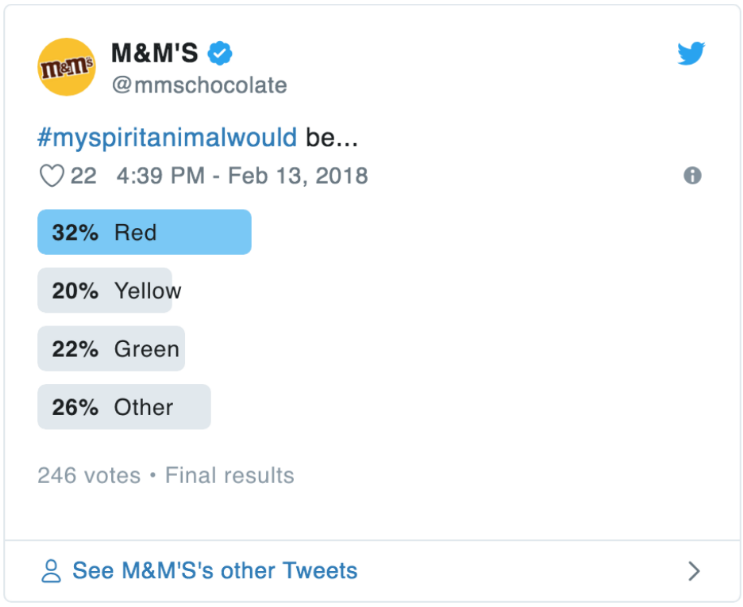In the following, we explain content engagement and how users are motivated to interact more and which six interactive content formats are particularly worthwhile.
What is Content Engagement?
Content engagement describes users’ interaction with content. User interactions vary depending on the format and channel of the content:
- Clicks
- Comments
- Dwell times
- Shares
A high level of content engagement signals that users see the relevance of the respective content. Search engines and social media platforms also notice this.
Content engagement is measured with different metrics for the different platforms and content types. These metrics are often seen as the most important success factors in content marketing.
Why is Content Engagement so important?
Content engagement is essential for two main reasons:
- First, with regards to users and potential customers. The more engaged users are on the websites, the more likely they will become customers. When customers interact with the brand, it signals a certain level of trust. If users can learn from the content or find answers to their questions regularly, the brand establishes itself as an authority in the customer’s mind. Higher content engagement brings better customer loyalty and more repeat customers in the long run.
- Moreover, a high level of content engagement shows search engines that the content is relevant. Google and the other search engines try to present users’ content as tailored as possible to their search queries. When users open a page and immediately bounce back because they couldn’t find the information they were looking for, this sends corresponding SEO signals to Google. Content with higher engagement rates is also more likely to be shared. If content is commented on, linked, and liked, search engines notice that the content exactly meets the users’ expectations.
How is content engagement measured?
Content engagement can be inferred from various “traditional metrics.” For example, these metrics can be easily collected using Google Analytics and Google Search Console.
In our post on content KPIs, we explain which metrics generally play a role in content marketing. The following measures are particularly important for evaluating user interaction:
- The click-through rate shows what percentage of the users your links were shown to in the SERPS also clicked on the content. If this rate is very low, users do not even visit the pages and therefore cannot interact with them. The click-through rate can be found in Google Search Console.
- The average time-on-page shows how long users browse the respective content. In Google Analytics, this metric can be found under Behavior>Website Content>All Pages> Average Time on Page. Short visit times are often accompanied by high bounce rates and mean that content was not read in the first place. Longer dwell times are a prerequisite for healthy content engagement.
When observing high times-on-page, it is often interpreted that readers have spent the indicated time on the content. However, this is not true, especially if a user has opened the respective content simultaneously browsing in another tab. Google Analytics, for example, will then still include the entire time the page was open in its calculation of the average time-on-page.
Another problem with determining the time-on-page is that many web analytics tools have problems with exit pages. If a user leaves the domain from a page, the time spent on this page is not included in the calculation.
- Specialized content analytics tools like Parse.ly calculate a metric to avoid these inaccuracies. “Engaged Time” in Parse.ly shows the exact amount of time users actually clicked and interacted actively on the content.

The format of the content and the channel on which it is published will determine which metrics play a role in evaluating content engagement. For landing pages, articles, and blog posts, important metrics include scroll depth, pages per session, and number of clicks on internal links.
In social media channels, there are other metrics to consider. The algorithms of almost all channels prefer posts, images and ads with many likes, comments and shares. For videos, the completion rate is the most important metric. It shows how often a video has been run to the end.
How do we drive content engagement?
There are several aspects to consider to promote content engagement. Content should always be optimized content primarily with the user in mind. But the search engines must not be forgotten either:
Increase user interaction
Higher investments in content quality will ultimately be rewarded with more content engagement. Quality must be at the forefront of both new content creation and maintenance of existing content. Content needs to be constantly updated. That means annual figures and dates must be adjusted, and outdated information replaced. If you quote studies and refer to statistics, you should also keep updating them.
Content with a clear structure generates more interaction: users often scan the entire website at first glance. They try to get a quick overview of the content. Sometimes users are only looking for specific information and don’t want to read the whole text.
Content should therefore be logically structured and easy to read. Bullet points, lists, tables, or graphics often work better than long blocks of text. The key messages and most important information in the text should be in bold or otherwise highlighted.
Before creating content, resources should be invested in analyzing the target group. Knowing your buyer personas in detail means knowing which channel and format is most effective to reach them. The language style and tone must also be tailored to the target group. The better you know your audience’s problems, the more precisely a data-based content strategy can be aligned with them.
Asking questions and addressing readers is another way to encourage especially comments under content. Blog posts should allow visitors to share their opinion on the content with a comment section. Well-designed CTAs and prominently placed share buttons make it easier for users to share the content.
Optimize SEO factors
Internet users have countless options to access any kind of information. If one-page loads slowly, they go straight to the next. Pagespeed is one of the most important SEO factors for good content engagement. Improvements in loading speed can be achieved by reducing the size of graphics, browser caching, or using content delivery networks, among other measures.
The audience analysis already described also prevents content from missing the search intentions of potential customers. If you don’t answer the search intent behind a keyword with your content, you won’t rank.
Large sites with lots of traffic can use A/B testing to determine which CTAs or which approach works best. However, smaller companies should also use specialized SEO tools to understand user interaction better.
What type of content produces particularly high levels of content engagement? 6 examples:
A few engagement-boosting content formats are easy to add to existing content. Ideas for more interactive content include:
- Quizzes: They are particularly popular because users like to test their knowledge and get direct results
- Configurators: Particularly appropriate in e-commerce. Here, customers can personalize products. At Converse, for example, customers can configure their own Chucks.
- Surveys: Readers not only want to express their opinion on the subject of the content, but they also want to know what others think. Surveys work on social media channels, blog posts and for nearly all types of companies. Especially Newspapers like to encourage user interaction with surveys under articles.

- Calculator: Potential customers can calculate the cost of a service in advance.
- Slideshows: Not very complex to create. Especially with ranked lists, users click through the slideshow to find out who is number 1.
More content engagement with expert help
88% of content marketers surveyed believe that interactive content is the best way to stand out from the competition.Users need to be satisfied just as much as search engines for more content engagement. Our experts can help you implement the tools you need to do this.
